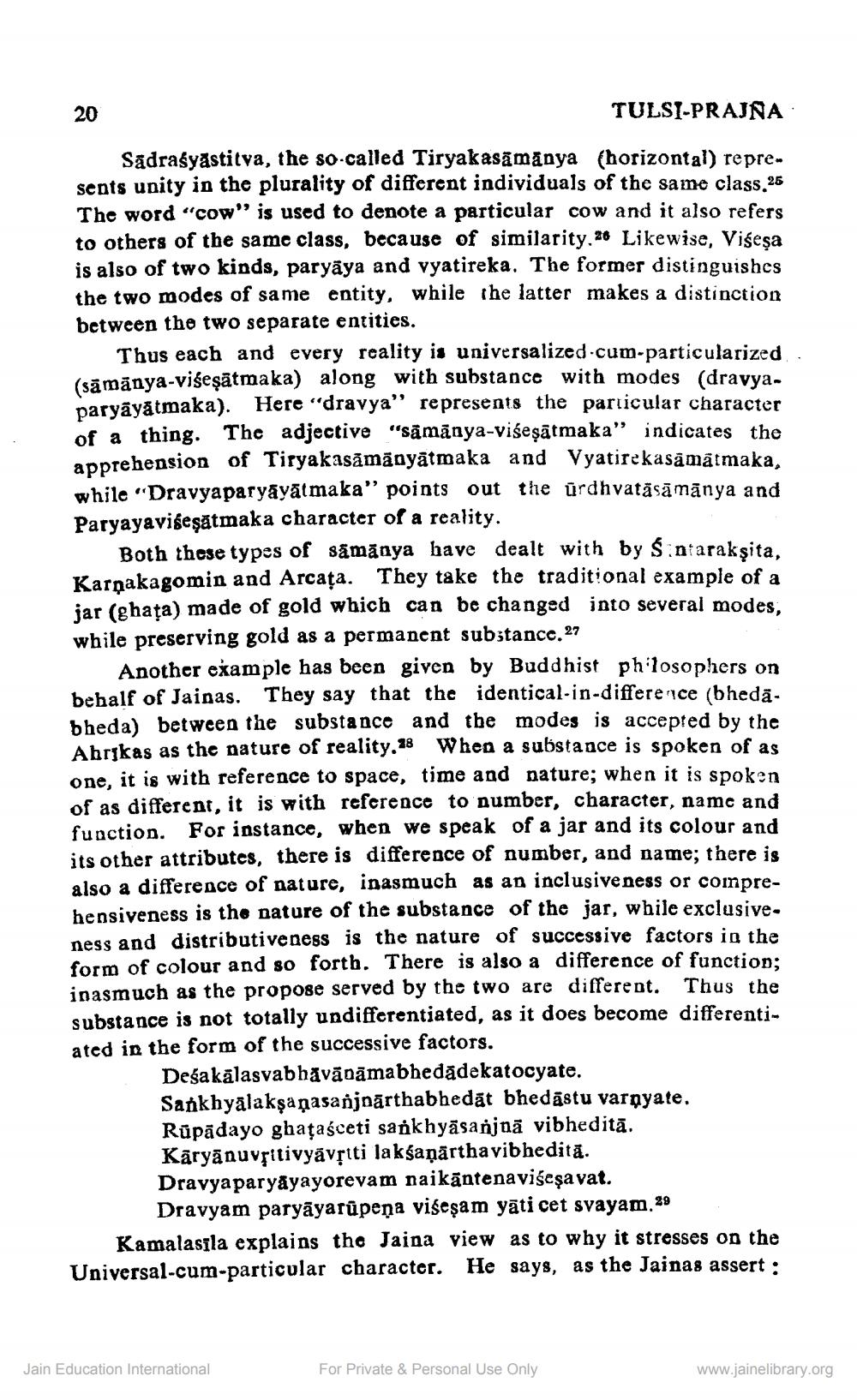________________
20
Sadrasyastitva, the so-called Tiryakasāmānya (horizontal) represents unity in the plurality of different individuals of the same class 25 The word "cow" is used to denote a particular cow and it also refers to others of the same class, because of similarity. Likewise, Visesa is also of two kinds, paryāya and vyatireka. The former distinguishes the two modes of same entity, while the latter makes a distinction between the two separate entities.
TULSI-PRAJNA
Thus each and every reality is universalized-cum-particularized (sāmānya-viseṣātmaka) along with substance with modes (dravyaparyāyātmaka). Here "dravya" represents the particular character of a thing. The adjective "samanya-viśeṣātmaka" indicates the apprehension of Tiryakasāmānyatmaka and Vyatire kasāmātmaka, while "Dravyaparyāyātmaka" points out the urdhvatāsāmānya and Paryayaviseşatmaka character of a reality.
Both these types of samanya have dealt with by Śntaraksita, Karnakagomin and Arcata. They take the traditional example of a jar (ghata) made of gold which can be changed into several modes, while preserving gold as a permanent substance. 27
Another example has been given by Buddhist philosophers on behalf of Jainas. They say that the identical-in-difference (bhedabheda) between the substance and the modes is accepted by the Ahrikas as the nature of reality.18 When a substance is spoken of as one, it is with reference to space, time and nature; when it is spoken of as different, it is with reference to number, character, name and function. For instance, when we speak of a jar and its colour and its other attributes, there is difference of number, and name; there is also a difference of nature, inasmuch as an inclusiveness or comprehensiveness is the nature of the substance of the jar, while exclusiveness and distributiveness is the nature of successive factors in the form of colour and so forth. There is also a difference of function; Thus the inasmuch as the propose served by the two are different. substance is not totally undifferentiated, as it does become differentiated in the form of the successive factors.
Desakālasvabhāvānāmabhedadekatocyate.
Sankhyalakṣaṇasañjnārthabhedāt bhedāstu varṇyate. Rūpadayo ghataśceti sankhyāsanjna vibhedita. Karyanuvṛitivyāvṛtti lakṣaṇārtha vibhedită.
Dravyaparyayayorevam naikāntenaviseṣavat. Dravyam paryāyarūpeṇa višeṣam yāti cet svayam.29
Kamalasila explains the Jaina view as to why it stresses on the Universal-cum-particular character. He says, as the Jainas assert:
Jain Education International
For Private & Personal Use Only
www.jainelibrary.org




